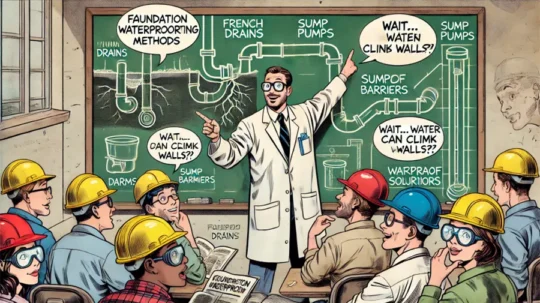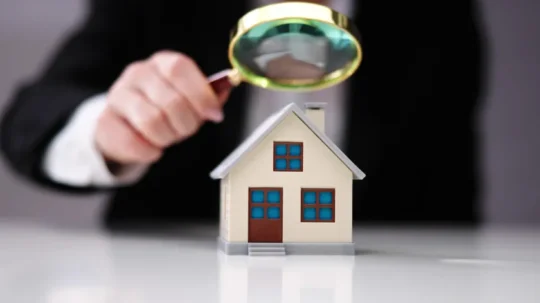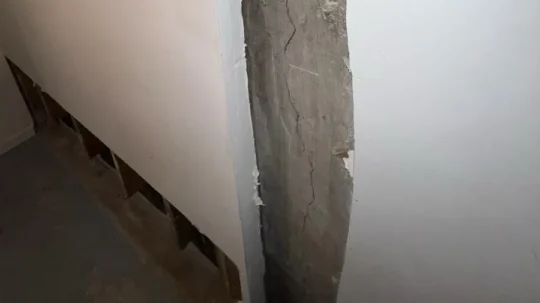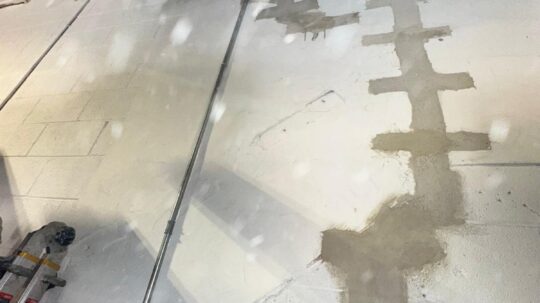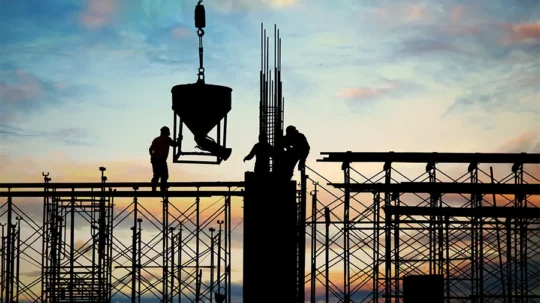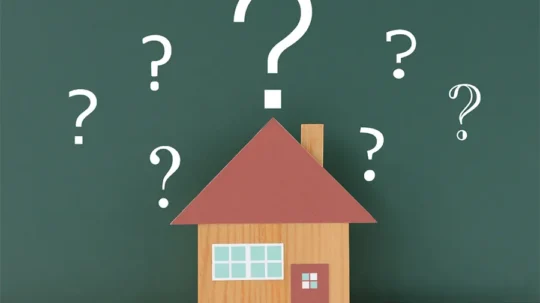
Water is one of the biggest threats to a building’s foundation. Left unchecked, moisture can seep into cracks, weaken structural integrity, and create costly problems such as mold growth and basement flooding. Foundation waterproofing is a proactive solution that prevents water from penetrating a structure’s base, ensuring long-term stability.
Whether it’s basement waterproofing, crawl space protection, or exterior drainage solutions, the right waterproofing method can safeguard your home against moisture-related damage. Without these protective measures, homeowners risk expensive repairs and potential structural failures.
This guide explains the importance of foundation waterproofing, common causes of water intrusion, and effective solutions to keep your home dry and secure.
Prevent Costly Foundation Repairs—Schedule a Waterproofing Inspection Today!
What is Foundation Waterproofing?
Foundation waterproofing refers to a set of techniques designed to prevent moisture from entering a building’s foundation, protecting it from deterioration and structural issues. It helps maintain the integrity of a home by stopping water infiltration before it causes damage.
Waterproofing is often confused with damp proofing, but the two are not the same. Waterproofing creates a complete barrier against water penetration, preventing leaks and moisture buildup. Damp proofing only slows down moisture absorption but does not fully block water from entering the foundation.
Two Main Types of Foundation Waterproofing
- Interior Waterproofing: Interior waterproofing solutions manage water that has already entered the home and redirect it away from the foundation.
-
- Interior drainage systems use French drains and sump pumps to remove excess water.
- Sealants and waterproof coatings provide a protective layer on basement walls.
- Vapor barriers and dehumidifiers help reduce moisture in crawl spaces.
- External Waterproofing: Exterior waterproofing solutions prevent water from reaching the foundation in the first place.
- Waterproof membranes are applied to exterior foundation walls to block moisture.
- Exterior drainage systems like French drains and soil grading redirect water away.
- Foundation excavation and sealants are used to seal cracks and apply protective barriers.
Understanding these methods allows homeowners to choose the best solution for their foundation and work with waterproofing contractors to ensure long-term protection.
Keep Your Foundation Strong—Explore Professional Waterproofing Solutions Today!
Why Does Foundation Waterproofing Matter?
Without proper foundation waterproofing, homes and buildings are at risk of serious water-related damage that can compromise safety and structural integrity. Moisture intrusion can lead to a wide range of problems, many of which become costly to repair if left unaddressed.
Consequences of Water Intrusion
- Structural Damage: Structural damage can occur when water weakens concrete and causes cracks. Foundation walls may shift or settle over time, leading to erosion and instability.
- Mold and Mildew: Mold and mildew thrive in damp environments. Spores spread through HVAC systems, reducing indoor air quality and causing respiratory issues.
- Increased Repair Costs: Delaying waterproofing increases repair costs. Minor cracks can grow into serious foundation problems, leading to expensive structural repairs and mold remediation.
- Rotting and Rusting of Surfaces: Basements and crawl spaces are prone to flooding. Standing water can ruin flooring, drywall, and personal belongings. Persistent moisture can also cause wood rot and rust on metal fixtures.
Investing in basement waterproofing and drainage solutions helps homeowners prevent these risks and maintain a safe, structurally sound home. A waterproofed foundation not only protects against immediate water damage but also increases property value over time.
Stop Costly Water Damage Before It Starts—Schedule a Free Consultation Today!
Signs That Your Foundation Needs Waterproofing
Recognizing the warning signs of foundation moisture issues early can help homeowners take action before costly damage occurs. Ignoring these symptoms can lead to worsening foundation problems, mold growth, and structural instability.
Common Warning Signs of Foundation Water Damage
- Cracks Wider Than 1/8 Inch – May indicate foundation movement or excessive soil pressure.
- Expanding Or Spreading Cracks – Growing cracks suggest ongoing structural stress.
- Moisture Seeping Through The Crack – Leads to mold growth, basement water damage, and further weakening.
- Bowing Walls Or Shifting Floors – Signals severe foundation movement requiring immediate repair.
Why Early Detection is Critical
Catching foundation moisture issues early prevents costly repairs. Waterproofing solutions like crawl space encapsulation, sump pumps, and exterior drainage systems can help manage and redirect water before it causes serious damage.
Worried About Foundation Moisture? Get a Professional Waterproofing Assessment Today!
Common Foundation Waterproofing Methods
Foundation waterproofing involves several techniques, each suited to different types of moisture problems and foundation conditions. Selecting the right method depends on the source of water intrusion, foundation type, and the severity of existing issues.
Interior Drainage Systems
- French Drains – Installed along the basement perimeter to channel water to a sump pump.
- Sump Pumps – Pumps collected water out of the basement, preventing flooding.
- Drainage Tiles – Installed beneath the foundation to redirect groundwater.
Exterior Waterproofing Membranes
- Waterproof Sealants – Applied to the foundation’s exterior to block moisture.
- Elastomeric Coatings – Flexible coatings that expand with foundation movement.
- Drainage Boards – Installed on exterior walls to provide a barrier against water pressure.
Crawl Space Encapsulation
- Vapor Barriers – Seals the crawl space floor and walls to prevent moisture seepage.
- Dehumidifiers – Controls humidity levels to prevent mold growth.
- Sealed Crawl Space Vents – Prevents excess moisture from entering.
Grading & Drainage Solutions
- Proper Landscaping Slope – Directs rainwater away from the foundation.
- Downspout Extensions – Moves roof runoff safely away from the home.
- Dry Wells & Swales – Helps manage excess surface water.
Crack Injections & Sealants
- Epoxy Injections – Fills foundation cracks to restore structural strength.
- Polyurethane Injections – Expands to seal cracks and prevent water intrusion.
- Hydraulic Cement & Sealants – Quick fixes for minor cracks and leaks.
Each method offers different levels of protection, and homeowners should consider working with waterproofing contractors to determine the best solution for their foundation.
Choose the Best Waterproofing Solution for Your Home—Talk to an Expert Today!
Interior vs. Exterior Waterproofing: Which One is Right for You?
Choosing between interior and exterior foundation waterproofing depends on factors like water source, foundation material, and long-term maintenance goals.
| Feature | Interior Waterproofing | Exterior Waterproofing |
| Installation | Less invasive; done inside the basement or crawl space | Requires excavation around the foundation |
| Effectiveness | Manages water that enters the home | Prevents water from reaching the foundation |
| Cost | More affordable, good for minor issues | More expensive but long-term protection |
| Maintenance | May require sump pump maintenance | Typically low maintenance once installed |
| Best For | Minor leaks, managing existing moisture | Preventing major water intrusion at the source |
Factors influencing the right choice include:
- Soil Type – Clay-heavy soil holds more moisture, often requiring exterior solutions.
- Foundation Type – Basements benefit from interior drainage, while crawl spaces often need encapsulation.
- Budget – Interior solutions are more budget-friendly, while exterior waterproofing is a long-term investment.
For severe water intrusion, a combination of both methods may provide the best protection.
The Cost of Leaving Water Seepage to Continue
Not waterproofing your foundation when you have moisture constantly entering your home can lead to costly consequences quickly, including extensive foundation repairs and home devaluation.
Water damage can cause:
- Foundation Settlement & Structural Damage – When water weakens soil beneath the foundation, it causes shifting, leading to uneven floors and wall cracks.
- Mold & Mildew Growth – Damp conditions promote mold, affecting indoor air quality and leading to health concerns.
- Basement & Crawl Space Flooding – Water accumulation damages flooring, drywall, and stored belongings.
- Expensive Repairs – Minor cracks that could have been sealed early may require full foundation underpinning later.
Avoid Expensive Repairs—Invest in Professional Waterproofing Now!
Choosing the Right Foundation Waterproofing Contractor
Hiring a reliable foundation waterproofing contractor is key to ensuring lasting moisture protection for your home. Consider the following factors when selecting a professional:
- Experience & Certifications – Look for licensed, insured contractors with proven experience in basement and crawl space waterproofing.
- Customer Reviews & Testimonials – Check online reviews and ask for references to verify quality service.
- Warranty & Service Guarantees – A reputable contractor should offer warranties on waterproofing solutions.
- Transparent Pricing & Assessments – Avoid hidden fees by requesting a detailed inspection and estimate.
Red flags to watch for include contractors who pressure you into unnecessary services or those unwilling to provide written agreements.
Working with experienced waterproofing contractors ensures that your foundation remains protected for years to come.
What is Foundation Waterproofing and Why Does It Matter: Final Thoughts
Foundation waterproofing is a crucial investment that protects your home from moisture damage and structural deterioration. Whether you choose interior drainage solutions, exterior membranes, or crawl space encapsulation, taking action early prevents costly foundation repairs.
Ignoring water intrusion can lead to long-term structural issues, mold growth, and expensive remediation. By recognizing the warning signs and working with qualified waterproofing contractors, homeowners can secure their foundations against moisture damage.
Taking the right steps now ensures that your home remains stable, dry, and free from moisture-related problems for years to come.
Keep Your Foundation Dry and Strong—Schedule a Free Inspection Today!
